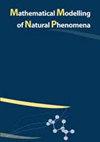循环反应器的动力学与控制综述
IF 2.1
4区 数学
Q2 MATHEMATICAL & COMPUTATIONAL BIOLOGY
引用次数: 0
摘要
在环形反应器中,系统由若干个反应器单元组成,这些反应器单元被组织成一个回路,进料在几个端口中的一个进行,进料端口进行切换。在最简单的操作中,形成一个脉冲并围绕它旋转,产生高温,使稀流燃烧成为可能。导出了具有无限单元数的极限模型。当切换到前传播速度~1时,两种模型都出现了在运动坐标中稳定的旋转脉冲。但这种行为存在于一个狭窄的领域。采用一般一级阿伦尼乌斯动力学进行了模拟。回顾了实验观察结果。在狭窄的冷冻旋转模式域之外,系统可能表现出多周期或准周期的操作,这些操作被非活性反应域分开。分岔集包含许多复杂锁频解决方案的“手指”状域,允许在更高的进给温度下扩展操作域。控制是必要的,以获得稳定的简单旋转冻结模式,在狭窄的主动操作范围内。回顾了各种经过测试的控制方法。LR燃烧的实际实施将涉及几种不同点火温度的反应物。设计和控制应旨在产生锁定的前沿,避免较慢的反应消失。本文章由计算机程序翻译,如有差异,请以英文原文为准。
Dynamics and control of loop reactors - a review
In loop reactors the system is composed of several reactor units that are organized in a loop and the feeding takes place at one of several ports with switching of the feed port. In its simplest operation a pulse is formed and rotates around it, producing high temperatures which enable combustion of dilute streams. A limiting model with infinite number of units was derived. Rotating pulses, steady in a moving coordinate, emerge in both models when the switching to front propagation velocities ~1. But this behavior exists over a narrow domain. Simulations were conducted with generic first order Arrhenius kinetics. Experimental observations are reviewed.
Outside the narrow frozen rotating pattern domain the system may exhibit multi- or quasi-periodic operation separated by domains of inactive reaction. The bifurcation set incorporates many 'finger'-like domains of complex frequency-locked solutions that allow to extend the operation domain with higher feed temperatures.
Control is necessary to attain stable simple rotating frozen pattern within the narrow domains of active operation. Various tested control approaches are reviewed.
Actual implementation of combustion in LR will involve several reactants of different ignition temperatures. Design and control should be aimed at producing locked fronts and avoid extinction of slower reactions.
求助全文
通过发布文献求助,成功后即可免费获取论文全文。
去求助
来源期刊

Mathematical Modelling of Natural Phenomena
MATHEMATICAL & COMPUTATIONAL BIOLOGY-MATHEMATICS, INTERDISCIPLINARY APPLICATIONS
CiteScore
5.20
自引率
0.00%
发文量
46
审稿时长
6-12 weeks
期刊介绍:
The Mathematical Modelling of Natural Phenomena (MMNP) is an international research journal, which publishes top-level original and review papers, short communications and proceedings on mathematical modelling in biology, medicine, chemistry, physics, and other areas. The scope of the journal is devoted to mathematical modelling with sufficiently advanced model, and the works studying mainly the existence and stability of stationary points of ODE systems are not considered. The scope of the journal also includes applied mathematics and mathematical analysis in the context of its applications to the real world problems. The journal is essentially functioning on the basis of topical issues representing active areas of research. Each topical issue has its own editorial board. The authors are invited to submit papers to the announced issues or to suggest new issues.
Journal publishes research articles and reviews within the whole field of mathematical modelling, and it will continue to provide information on the latest trends and developments in this ever-expanding subject.
 求助内容:
求助内容: 应助结果提醒方式:
应助结果提醒方式:


